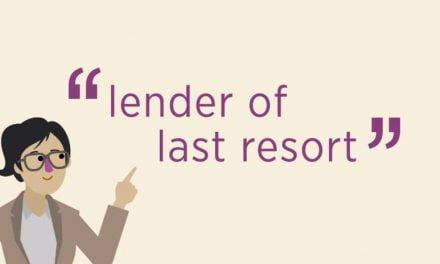Do you believe a "cramdown clause" ought to be included in the California trust deed?
- No (62%, 77 Votes)
- Yes (38%, 47 Votes)
Total Voters: 124
To ensure the greatest compassion and efficiency in the marketplace, lenders ought to develop and disclose a forgiveness formula, according to a prominent University of Chicago economist.
In the great wide world of finance, default is inevitable. Lenders devote a great deal of resources to avoiding this risk, hedging their bets and collecting delinquent debts. But is this the most effective way of mitigating risk and dealing with borrowers?
Rather than waste time and money attempting to squeeze blood from a proverbial turnip, including a clearly stated formula for debt forgiveness in the contract would ultimately preserve resources and provide relief to debtors suffering from real hardship.
The formula would include distinct definitions for hardship, thus eliminating the subjective and often mysterious metrics for determining how down and out a debtor must be before they are negotiated with. Additionally, the formula would state how much of the loan will be forgiven in proportion to the debtor’s circumstances.
On one hand, such a formula would produce more certainty for lenders and debtors alike (and as we all know, greater certainty on the market means less risk). However, the danger in such a clearly disclosed formula is the so-called moral hazard it presents. Debtors may use the forgiveness formula to their advantage, defaulting when it suits them, thus driving up the cost of loans for other borrowers who faithfully make payments.
first tuesday insight
Well, half of this idea already exists when it comes to real estate trust deeds in California. The loan is secured by the real estate, plain and simple.
In the event of default, the homeowner has the legal right, clearly stated in the trust deed, to sell his home back to the lender in full satisfaction of the remaining balance of the loan, also known as the homeowner’s put option.
It is exercised by simply defaulting on payments. Since the moral risk of defaulting when it suits the homeowner is the lender’s perpetual fear, their moral risk argument holds no water in California.
The problem? Most buyers do not read the contracts they sign. Instead, they are quickly shepherded through the purchasing process by their overzealous agent, directed to sign, initial, sign. Repeat ad infinitum. Then, in times of financial hardship, homeowner behavior is often dictated by the misunderstanding that they must break their backs to pay the mortgage lender at all costs. All the while, their forgiveness formula, so to speak, is right there in black and white.
Of course, this assumes a scenario where a homeowner walks away.
What about forgiving a portion of the debt and allowing them to keep their home, also known as a cramdown? This would be the ideal forgiveness formula for the real estate market.
When considering the home’s net present value (NPV), a lender would almost certainly benefit more from reducing a homeowner’s principal to the current fair market value (FMV) rather than engaging in the costly foreclosure process. After which, the lender has to turn around and resell the home at FMV anyway! The loss is the same, but the manner of getting there is less disruptive for all parties involved.
Related article:
first tuesday has been advocating the institutionalization of the cramdown since before the housing bubble even began to foam . It just makes sense. Unfortunately, sense is in short supply amongst lenders and even scarcer amongst our government housing officials – Congress in particular.
Re: “Forgiveness formulas” from The New York Times



















